THE FUTURE OF RETAIL
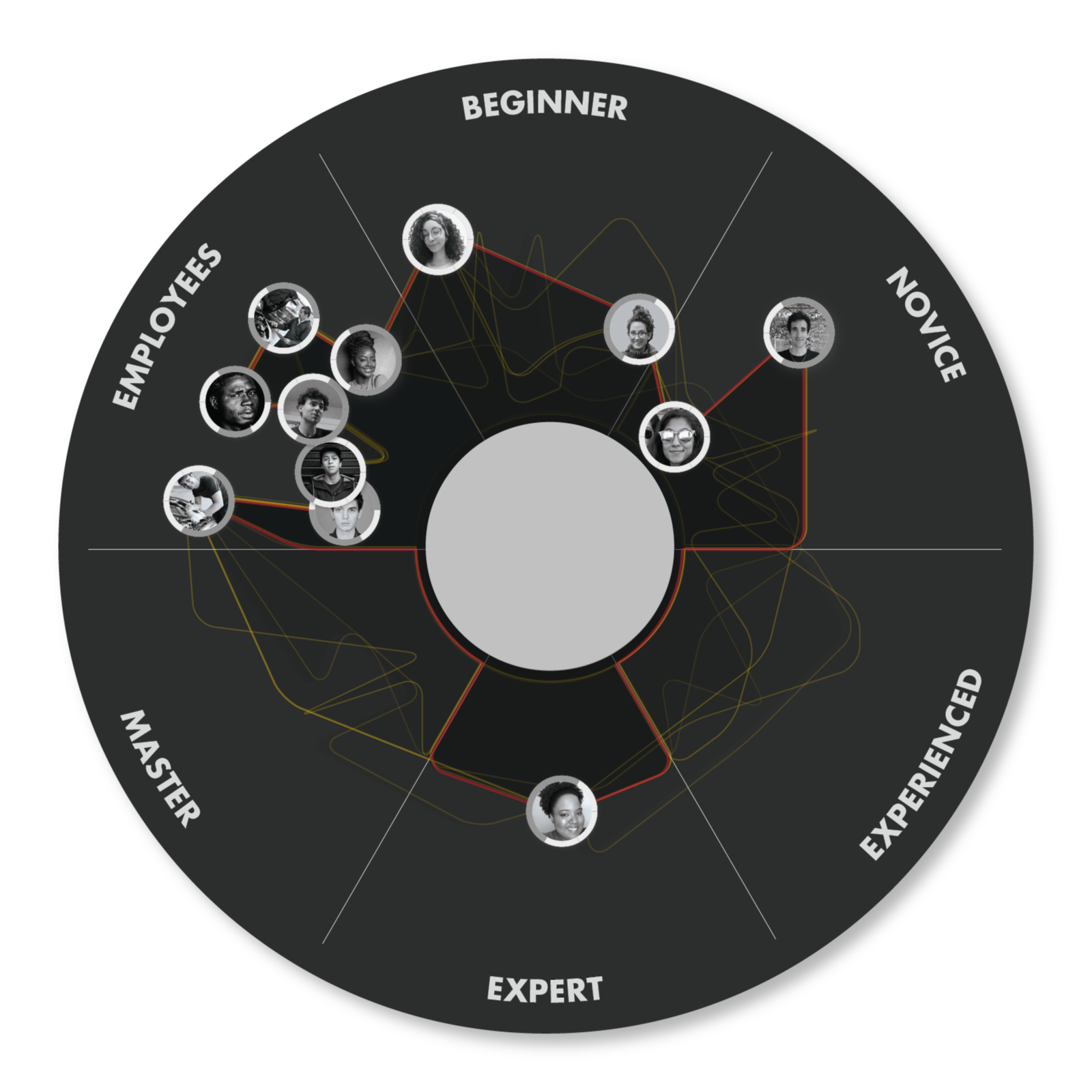
Spring 2019
How might an auto parts company ethically leverage machine learning in their Store of the Future to produce personalized, efficient, useful consumer interactions that allay user concerns? What role might the sales team members play in supporting such positive experiences?
Collaborators
Dmitri Knapp
Victoria Gerson
Ashey Anderson
UX Design
Machine Learning
Image Recognition
The Intelligent Auto Store
How might an auto parts company ethically leverage machine learning in their Store of the Future to produce personalized, efficient, useful consumer interactions that allay user concerns? What role might the sales team members play in supporting such positive experiences?
Collaborators
Dmitri Knapp
Victoria Gerson
Ashey Anderson
UX Design
Machine Learning
Image Recognition
Challenge
Challenge
For this project we were tasked to incorporate machine learning and facial recognition in an retail environment that sells car parts. The project was divided into three teams. Our persona was the expert.
Learner: Someone who has limited knowledge of cars.
Achiever: Someone who is a car enthusiast.
Expert: Someone who is very knowledgable about cars and works on them.

Approach
Understanding the User and the store
In the initial phase of the design research process, we conducted fly on the wall observations of their Store of the Future (a prototyped future retail space) as well as stores in operation. We conducted interviews with managers, employees, and customers, and asked them to reflect on expert persona behavior—how they use the store (routes, needs, purchases), and their relationship with the owners. We also interviewed an ex-mechanic to glean insights into needs, wishes, and pain points..
Insights
- Experts use a reserved section—the back of the store.
- They typically know what they want before they come in and order parts online.
- Experts want to reduce time to maximize profit.
- Experts like clout and recognition.
- Experts can gain connections through in store experiences.
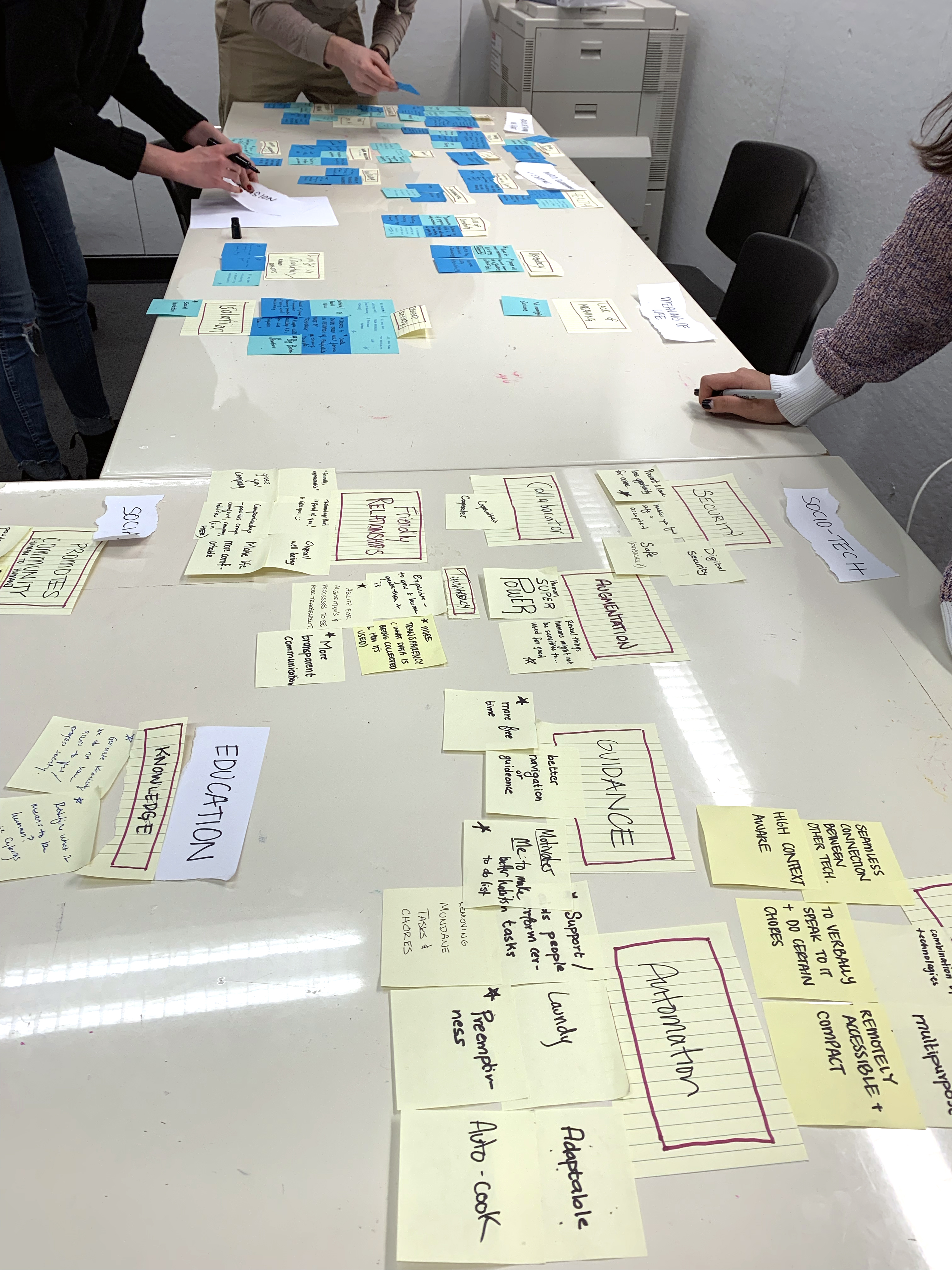


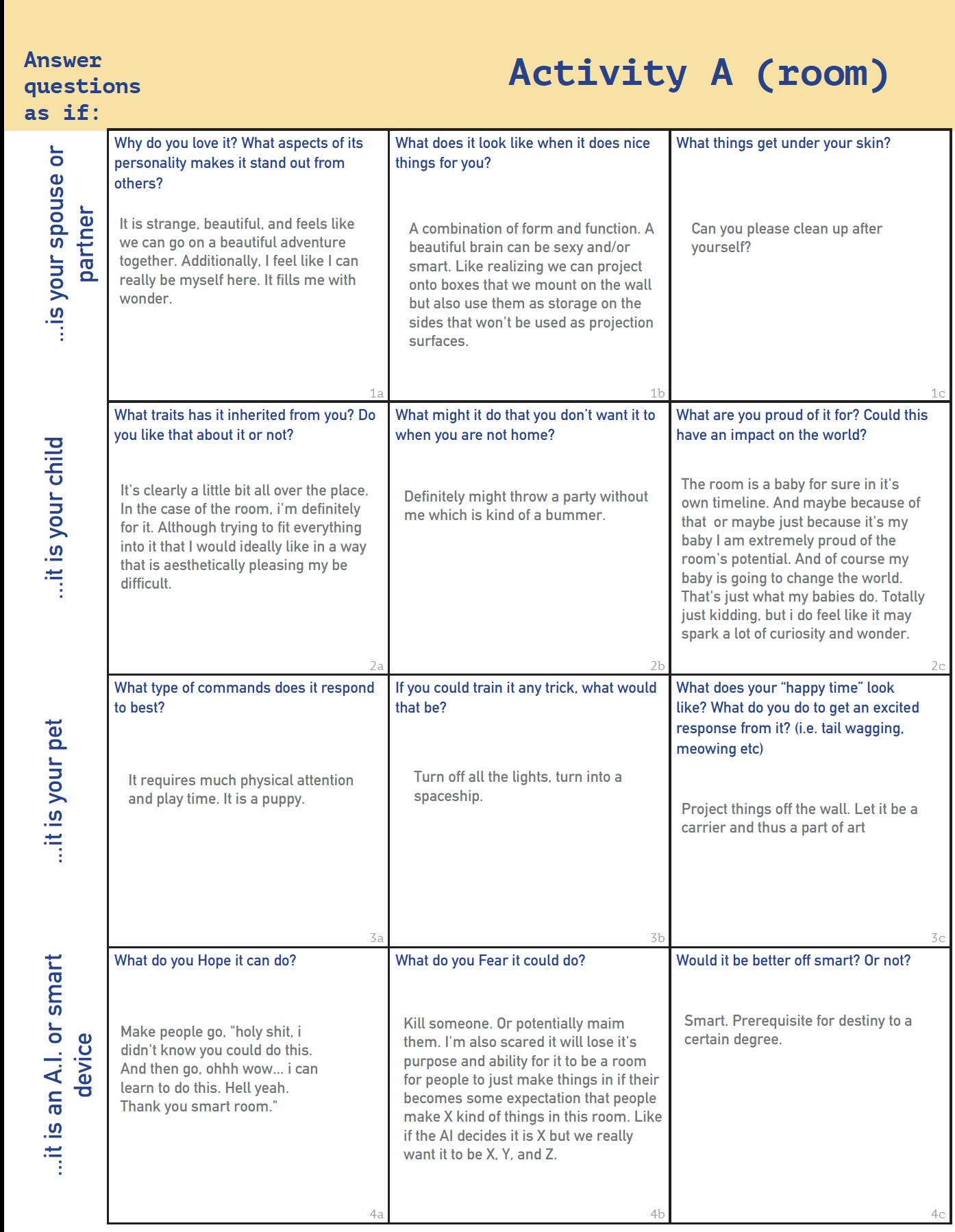

Understanding Machine Learning
To create context, we did a benchmark analysis of existing machine learning technologies in retail spaces and crafted cultural probes to gain insight into user’s hopes and fears concerning AI.
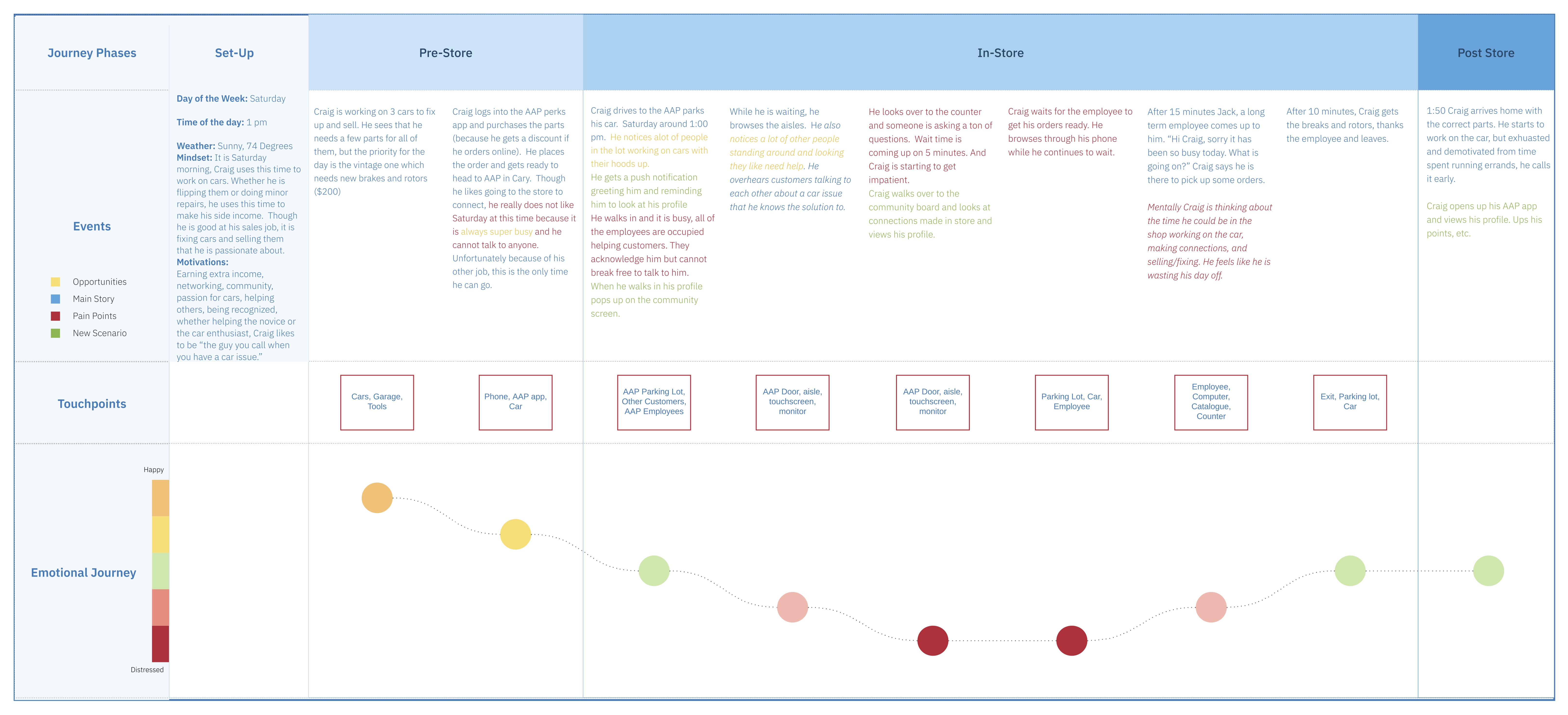


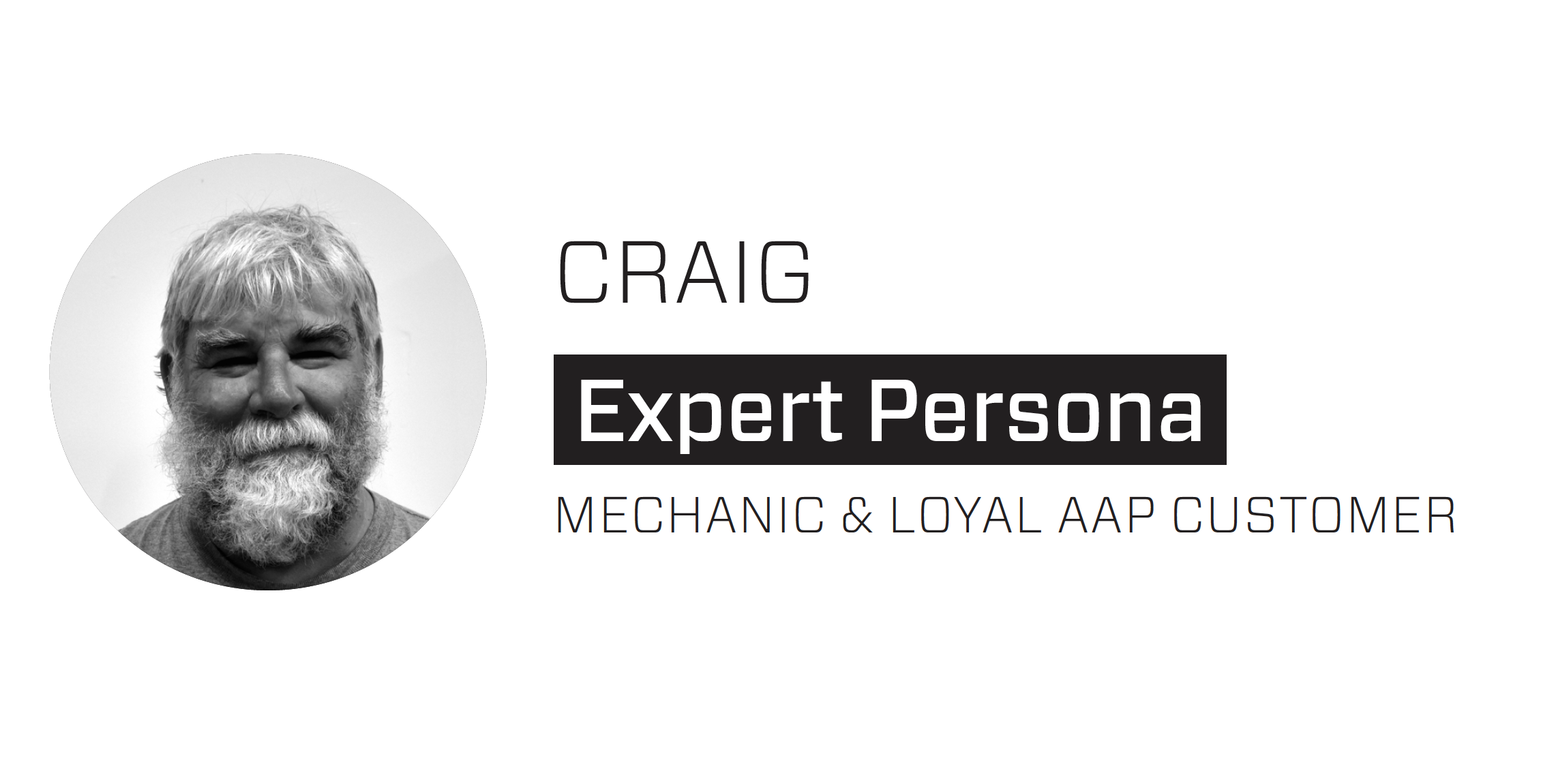
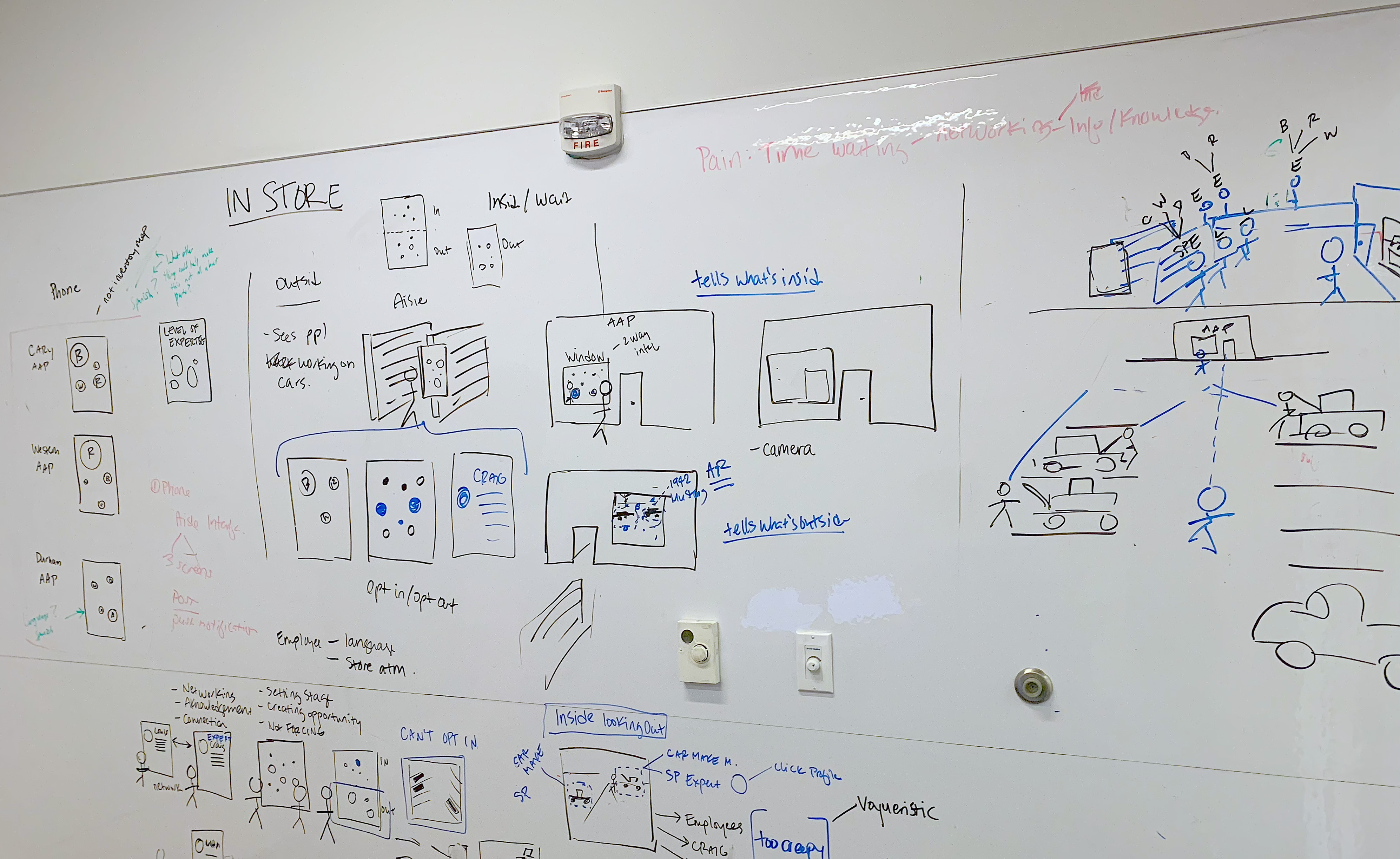
Generating Personas and Scenarios
We gleaned insights from initial research methods to refine our persona, Craig, and created an “As Is” user journey map. We identified pain points and areas for opportunity:
Time: Improve rather than decrease time in the store.
Recognition: How can his expertise be recognized
Expertise: Leverage to create meaningful connections


Ideating
Once we had substantial preliminary research, we began the divergent stage of designing. To consider future scenarios, we workshopped with Futurist Stuart Candy and played the Thing of the Future Game. We used the game to expand upon potential scenarios and possibilities—some being pretty out there.
See Enacting Futures Workshop.



Lofi Prototyping + User Testing
We then narrow downed concepts, created alternative task flows, and generated “to be” User journey maps. We Body Stormed our ideas in the Store of the Future and critiqued initial iterations with the data scientist team to help us determine technical limitations.
Lofi iterations explored how machine learning can connect learners and achievers with experts inside the store. Our main concerns were how to ensure user privacy throughout the pre-store, in-store, and after-store experience. We user tested printed screen iterations at scale in studio.

Hi-Fi Prototyping + Filming
Insights from the tests led to “to be” user journey maps,” Hi-Fi prototypes, and a final scenario video we filmed at the Store of the Future. The project culminated in a presentation at the auto parts store headquarters downtown Raleigh.
Final Concept
Final Concept
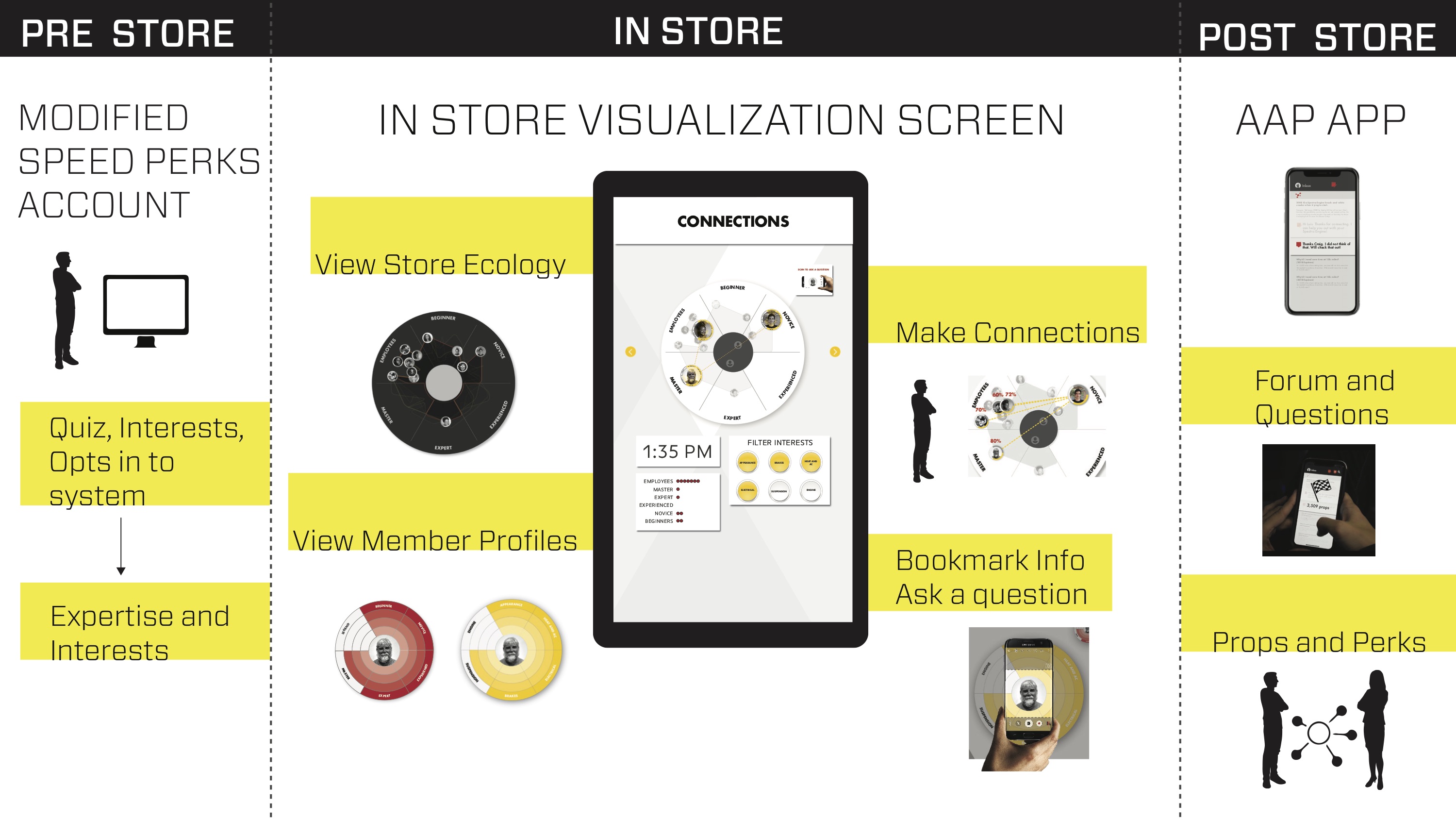

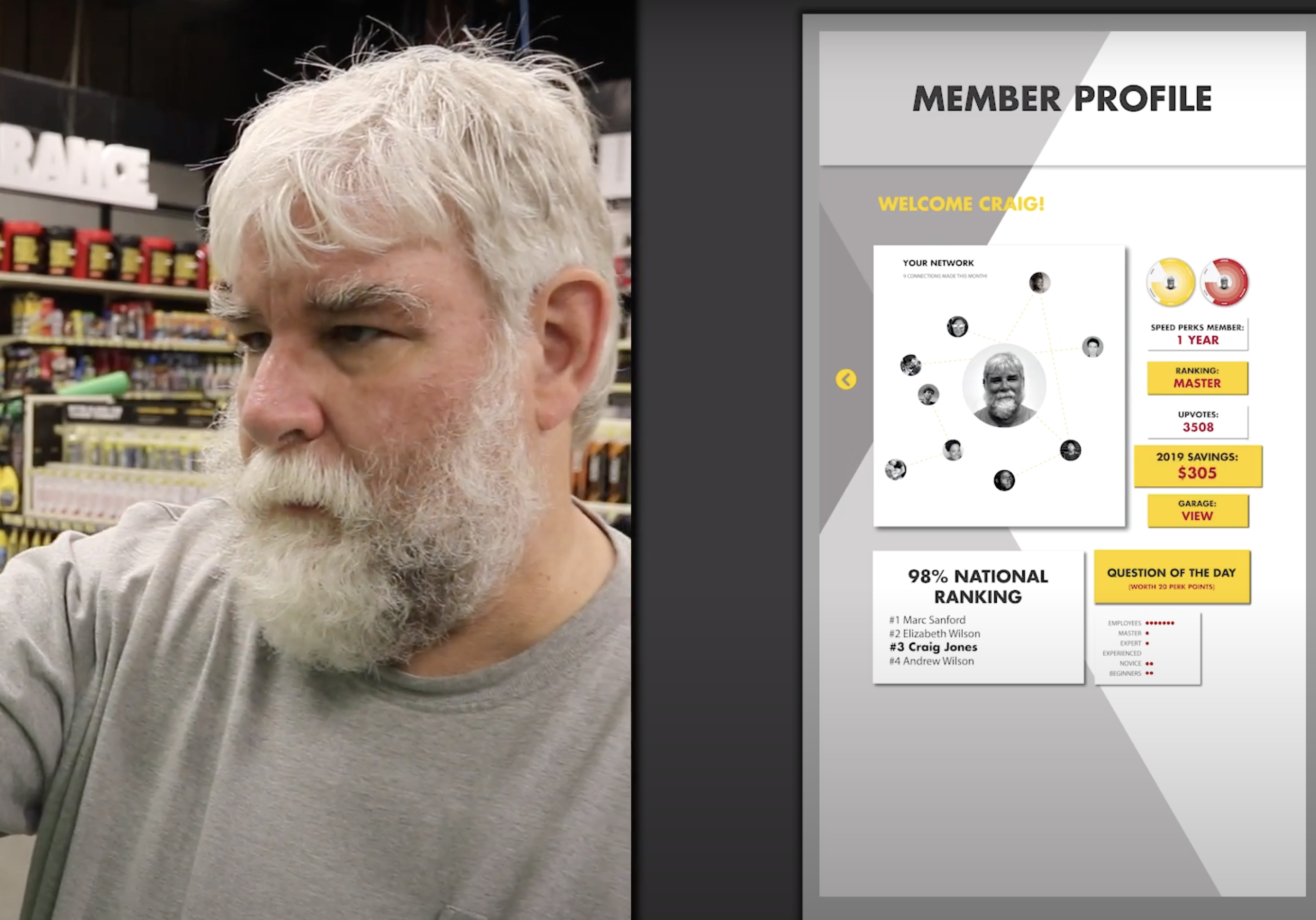
The Intelligent Auto Store
The final concept is centers around a revamping of the auto-store’s loyalty program to include a means through which customers and employees can connect through shared interests and levels of car knowledge expertise via image recognition and Machine learning. The system is displayed on a large scale in store monitor titled “How Smart is the Store” that provides access to user profiles and real time tracking of the store expertise.
“How Smart is the Store” system consists of experiences had both in and out of the store and encourages learner, achiever, expert, and employee participation.
The first touch point takes place pre-store: a user must create a Perks Account. This account functions the same way as it currently does, but with additional networking features. A user has the option to take a technician quiz that establishes their level of expertise and select how they want to engage with the community, via their particular “car related interests.” A profile is then created which they can choose to share or not share on the inshore visualization screen an app.
Once in store, the system is accessed through a large scale touch screen that, when not in use, shows the store’s shifting expertise and customer ecology. A customer can view member profiles, dl the app, make connections through ML recommendations, and bookmark member profiles to access later.
Because the system functions to initiate connections that extend beyond the store experience, the final touch point is the app, accessed through a member’s phone or website. Here a member can read the car forum, check their inbox to answer/ask questions to other experts, build their network, and receive props and perks to be used for later purchases.
Features
- Expertise and Quiz: Speed Perks Members can take the Advance Expert Challenge to gain rewards and build their profile.
- Real time store tracking: Dynamic visualization depicts who is in the store and their level of expertise with an opt in opt out process (Video of store tracking/Image of Novice/Expert
- Connections + Networking: Filtering system displays a user’s connection in the store according to their interests.
- Eye tracking: A customizable modular interface design for accessibility
- Screen to Phone integration: The app allows the user to scan the store expert in order to bookmark their information or ask a question.
Wider Implication
As a whole, the system functions to build community, disseminate car knowledge, incentive Speed Perk participation, and increase customer loyalty. It asks how ML capabilities can:
- Create community around each level of customer expertise
- Leverage the physical aspect of a traditional retail space to facilitate networking and community
- Leverage knowledge and expertise of the customers to benefit the business.